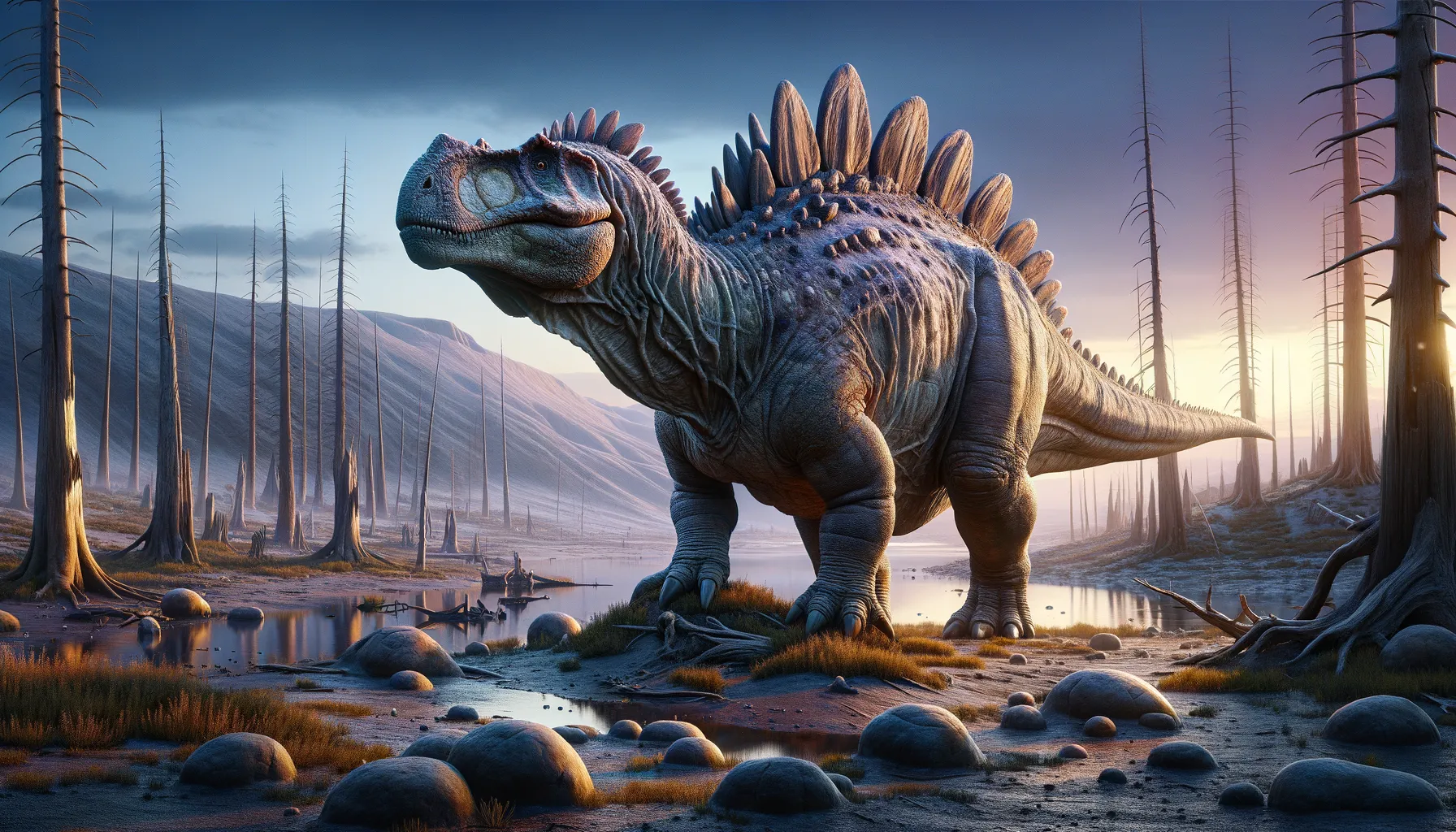
Shamosaurus
The armored giant of the dinosaur world.
Period
Cretaceous
Length
About 6 meters in length.
Height
Around 2 meters tall.
Weight
Approximately 2 tons.
Shamosaurus was a heavily armored dinosaur that roamed the Earth during the Cretaceous period. Recognizable by its bony back plates, it was a member of the Ankylosauridae family. Shamosaurus had a robust and sturdy build, providing it with protection against predators. Fossils were first found in Mongolia, shedding light on its presence in ancient Asia. Despite its formidable defenses, it was a gentle giant that spent much of its time foraging for food.
Diet
Shamosaurus was a herbivore, meaning its diet mainly consisted of plants. It likely fed on low-lying vegetation, using its beaked mouth to pluck ferns, shrubs, and other foliage. It may have also ingested rocks to aid in grinding plant material in its digestive system.
Hunting
Due to its herbivorous nature, hunting was not a part of Shamosaurus's behavior. Instead, it would have foraged for food in its environment. Its primary concern would have been avoiding predators, utilizing its armor for protection.
Environmental challenges
Shamosaurus faced environmental challenges like changes in climate and vegetation, which could affect food availability. Additionally, predation posed a significant threat, though its armored body provided substantial defense. Periodic natural disasters such as volcanic eruptions could also have impacted its habitat. Adaptation to these challenges was key to its survival over time.
Speed
Slow-moving due to its heavy armor.
Lifespan
Estimated between 50 to 80 years.
First discovery
First discovered in Mongolia in 1977.
Fun Facts
- Shamosaurus was an armoured dinosaur that lived during the Early Cretaceous period.
- It was part of the ankylosaur family, known for their bony plates and club-like tails.
- Shamosaurus fossils have been found primarily in Mongolia.
- Unlike some of its relatives, Shamosaurus did not have a tail club.
- The name 'Shamosaurus' means 'desert lizard' due to its discovery in the Gobi Desert.
- Shamosaurus was a herbivore, feeding on low-lying plants and vegetation.
Growth and Development
Shamosaurus underwent a lengthy growth period, gradually thickening its bony armor as it matured. Juveniles likely had softer, less developed defensive structures, making them more vulnerable. As they grew, their strength and ability to fend off predators increased. Research suggests a steady growth pattern characteristic of large plant-eating dinosaurs.
Habitat
Shamosaurus lived in what is now Mongolia, an area that offered a diverse ecosystem rich in plant life suitable for a herbivore. Its habitat likely included flood plains and forested areas, providing both food and shelter. The region's varied terrain gave Shamosaurus a range of opportunities for nesting and protection.
Interaction with other species
Shamosaurus coexisted with various other dinosaur species, including carnivores which posed threats. Its armor served as a deterrent during interactions with predatory dinosaurs. Social interactions among its kind could have included traveling in groups for better protection. Competitions for food resources with other herbivores may have occurred.
Natural lifespan
Shamosaurus could naturally live up to 80 years.
Reproduction
Reproduction in Shamosaurus involved laying eggs, as with other dinosaurs. It is believed that nests were constructed in a safe environment to keep eggs secure from predators. Parental care could have involved guarding the nest until hatching occurred.
Social behaviour
Shamosaurus may have had a social nature, potentially moving in groups to defend against predators. This grouping behavior would provide increased safety through numbers. However, specific social structures remain speculative given current fossil evidence.
Fossil locations
The primary fossil location for Shamosaurus is in Mongolia, specifically in the region known as the Gobi Desert, where its remains were first discovered. These fossil sites provide critical insights into the dinosaur's life and environment. Continued exploration in Mongolia holds promise for uncovering more about this fascinating creature.
